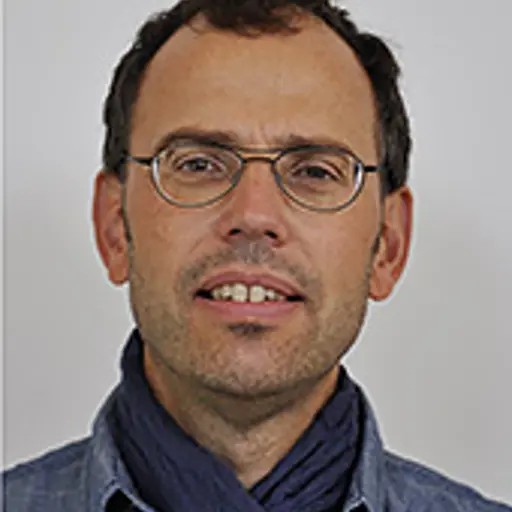Course syllabus adopted 2022-02-11 by Head of Programme (or corresponding).
Overview
- Swedish nameHållbar utveckling
- CodePPU065
- Credits7.5 Credits
- OwnerTKDES
- Education cycleFirst-cycle
- Main field of studyIndustrial Design Engineering
- ThemeEnvironment 7.5 c
- DepartmentINDUSTRIAL AND MATERIALS SCIENCE
- GradingUG - Pass, Fail
Course round 1
- Teaching language Swedish
- Application code 56124
- Block schedule
- Open for exchange studentsNo
- Only students with the course round in the programme overview.
Credit distribution
Module | Sp1 | Sp2 | Sp3 | Sp4 | Summer | Not Sp | Examination dates |
|---|---|---|---|---|---|---|---|
| 0106 Written and oral assignments 7.5 c Grading: UG | 7.5 c |
In programmes
Examiner
- Jonas Tuveson
- Lecturer, Design & Human Factors, Industrial and Materials Science
Eligibility
General entry requirements for bachelor's level (first cycle)Applicants enrolled in a programme at Chalmers where the course is included in the study programme are exempted from fulfilling the requirements above.
Specific entry requirements
The same as for the programme that owns the course.Applicants enrolled in a programme at Chalmers where the course is included in the study programme are exempted from fulfilling the requirements above.
Course specific prerequisites
Ergonomics TD (MTT010) Design and human factors (MMF273) or similar courses.
Aim
The course aims for giving an understanding for the complex relations that influence environmental adaption, of products and services, seen from a cycle-of-life perspective, which includes product development, manufacturing, consumption, transport and destruction. The course aims to introduce different methods and tools for sustainable product development.
Learning outcomes (after completion of the course the student should be able to)
- Explain the concept of sustainable development from different dimensions and perspectives such as critical sustainability problems in the world, linked to eg population increase, poverty, climate impact, ecosystem services etc. As well as show understanding of the complexity that affects whether human needs can be met within the limits of the environment.
- Manage and structure major overall issues in sustainable development by identifying and delimiting manageable sub-problems based on the engineer's intended influence area.
- From a system perspective, perform qualitative sustainability analyzes at the product level and propose measures for a product.
- Explain some different driving forces and barriers on the company / organizational level to improve the products and services' sustainability impact.
- Describe the content and use of current methods and tools for strategic sustainability work at different levels.
- Explain how assessment of the environmental impact takes place in relation to sustainable development.
- Describe how attitudes, norms and habits can constitute obstacles or driving forces for sustainable development at the individual, organizational and social levels.
- Apply problem solving as well as critical and creative thinking in a group with the purpose of combining industrial design with social aspects, ecology and economics in the design / product development process.
- Reflect on their professional role and their professional responsibility, as well as their role as citizen in relation to sustainable development.
- Separate facts from values, identify ethical dilemmas and be able to apply and discuss ethical balancing principles, and argue for different aspects and positions in connection with sustainable production.
- Have shown understanding in handling complex sustainability problems when prioritizing measures at both system level and level of detail to demonstrate a holistic approach.
Content
The course is divided into three parallel main tracks that deal with sustainable development from different perspectives and at different levels; system / social, corporate and individual level. The parallel tracks are divided into four stages:
- Complexity and connection. Here, general sustainability issues are discussed (wicked problems such as population increase, climate impact, etc.). Important problems that exist around the human impact on ecosystems are defined.
- What we can do. Strategies for sustainable development at different levels and priorities. Driving forces and obstacles for different strategies, discussion about conflicts between actors and levels.
- How we can do it. Practical methods / tools for improving the sustainability performance of products (and services). Example. The natural step four system conditions, Cradle to Cradle and life cycle analysis (screening) and others.
- How it turned out. Here is a major application project that is carried out as group work during the course, presented. In the project, methods and tools that have been presented during the course will be applied. An individual change task is also reported here. The course is then summarized.
Organisation
The teaching is conducted partly in a theory section with lectures as well as exercises in the form of laboratory work (workshops) and discussion tasks about 50 hours, exercises, tasks and project work in group about 100 hours and individual work about 50 hours. In total about 200 working hours.Literature
- Hållbar utveckling - En introduktion för ingenjörer och andra problemlösare. Fredrik Gröndahl och Magdalena Svanström, senaste upplagan.
- Okala Practitioner - Integrating Ecological Design, IDSA, Steve Belletire, Louise St. Pierre, Philip White. (en mörkbrun folder). ISBN: 978-0-9851674-0-0
Examination including compulsory elements
Individual examination in the form of assignments / assignments as well as written examinations, seminar assignments and laboratory work (workshops) / exercises and projects. Further details are presented in the course memo. Grading scale Pass/Fail (G/ U). Pass is required for all parts included.
Mandatory attendance at seminars, presentations of tasks and projects, at least 80% on lectures, tutorials and laboratory work (workshops) and active participation in all laboratory work.
The course examiner may assess individual students in other ways than what is stated above if there are special reasons for doing so, for example if a student has a decision from Chalmers about disability study support.
